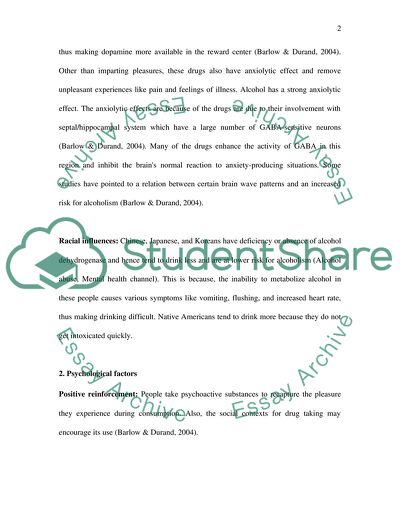Cite this document
(Alcohol Abuse: Early Identification and Treatment Research Paper, n.d.)
Alcohol Abuse: Early Identification and Treatment Research Paper. Retrieved from https://studentshare.org/health-sciences-medicine/1546220-in-reference-to-abnormal-psychology-what-causes-substance-related-disorders-particularly-those-dealing-with-alcohol-abuse
Alcohol Abuse: Early Identification and Treatment Research Paper. Retrieved from https://studentshare.org/health-sciences-medicine/1546220-in-reference-to-abnormal-psychology-what-causes-substance-related-disorders-particularly-those-dealing-with-alcohol-abuse
(Alcohol Abuse: Early Identification and Treatment Research Paper)
Alcohol Abuse: Early Identification and Treatment Research Paper. https://studentshare.org/health-sciences-medicine/1546220-in-reference-to-abnormal-psychology-what-causes-substance-related-disorders-particularly-those-dealing-with-alcohol-abuse.
Alcohol Abuse: Early Identification and Treatment Research Paper. https://studentshare.org/health-sciences-medicine/1546220-in-reference-to-abnormal-psychology-what-causes-substance-related-disorders-particularly-those-dealing-with-alcohol-abuse.
“Alcohol Abuse: Early Identification and Treatment Research Paper”, n.d. https://studentshare.org/health-sciences-medicine/1546220-in-reference-to-abnormal-psychology-what-causes-substance-related-disorders-particularly-those-dealing-with-alcohol-abuse.


